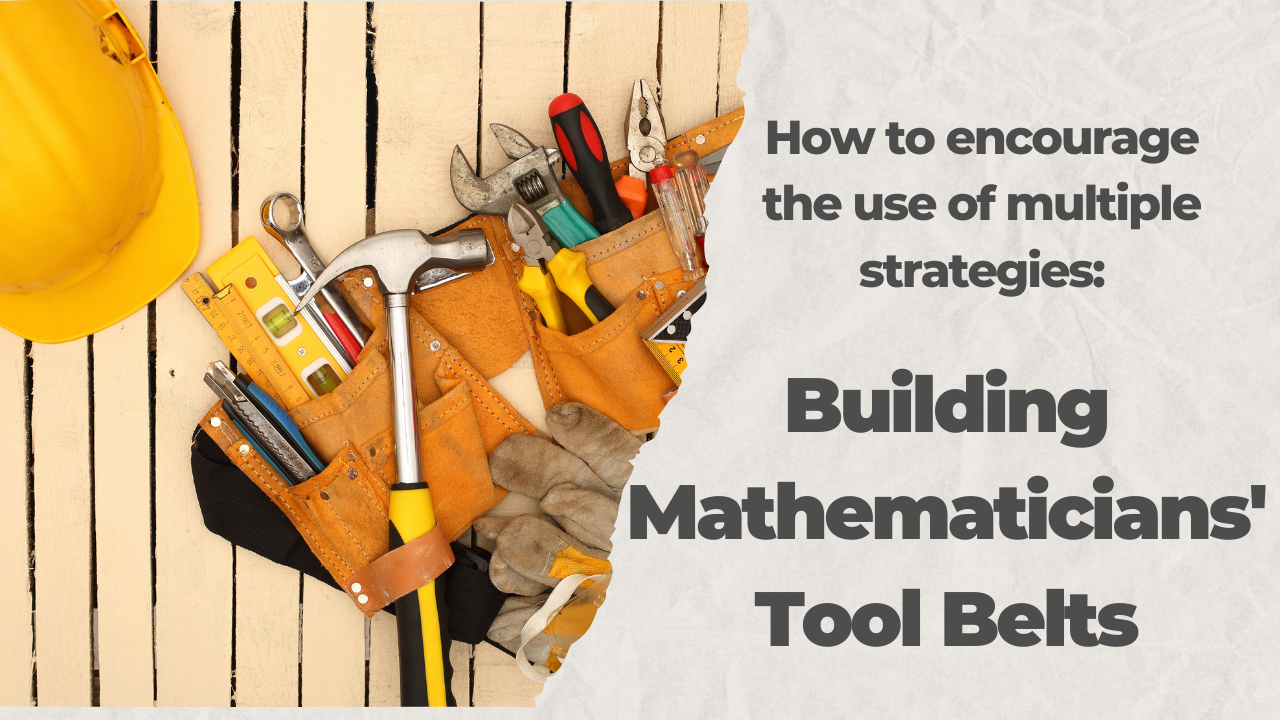How to encourage the use of multiple strategies: Building Mathematicians' Tool Belts
Oct 30, 2023
In the world of mathematics education, one thing is abundantly clear: there's no one-size-fits-all approach to problem-solving. Just as a builder relies on various tools to construct a house, mathematicians need a diverse set of strategies to tackle complex math problems effectively. This metaphor is what one teacher used to instill the importance of flexible problem solving strategies with her learners!
Early Primary Example: Building the Foundation
Imagine asking them to count a large collection of objects, say 1000. If they were to count them one by one, it could take a considerable amount of time. However, if you nudge the idea of counting by groups of 5 or 10, you'll witness a lightbulb moment.
To illustrate this concept, engage your class in a discussion. Pose questions like, "How long might it take you to count 1000 objects if you were only counting by 1's?" and "What if you counted them by 5's or 10's instead?" Encourage your children to share their thoughts on what makes the most sense and why.
Now, switch gears and present a smaller collection, perhaps just 8 objects. Here, the idea of counting by 1's, 5's, or 10's might be discussed again. These conversations set the stage for introducing the concept of a "mathematician's tool belt."
Emphasize that mathematicians, much like builders, need a variety of tools (strategies) to solve problems efficiently. Using the same strategy for every situation isn't always the most effective choice. As a math community, express your commitment to building and expanding your mathematician tool belts, incorporating various strategies to solve problems effectively.
Teacher tip: Use the language of ‘building our tool belt’ often, to remind and encourage children to think critically about the strategies they are using. Coming back to this idea often will reinforce number flexibility with the children.
Late Primary/Intermediate Example: Strengthening the Framework
As children progress to late primary and intermediate levels, it's essential to reinforce the idea of multiple math strategies. Challenge them with equations like 9+something (e.g., 379+13 or 4849+326). Encourage them to explore and share the strategies they employ. Some children may prefer algorithmic methods, while others might adopt a more intuitive approach. For instance, a child might recognize that 379 is quite close to 380, making it more convenient to add 380+12 instead.
Introduce the idea that mathematicians have a toolbox filled with different strategies, and they can choose the one that best suits the numbers and their thinking process for a particular problem. Highlight that using just one strategy, like an algorithm, is akin to a builder using only a hammer—a limited approach that might not yield the best results.
Continue revisiting this idea throughout the year, celebrating children’s efforts to diversify their mathematician tool belts. Encourage them to explore various strategies and discover the ones that resonate most with their mathematical thinking.

By fostering a culture of flexibility and multiple strategies, you empower children to become versatile mathematicians capable of tackling a wide range of mathematical challenges. Building their mathematician tool belts not only prepares them for success in math but also equips them with problem-solving skills that extend far beyond the classroom.



